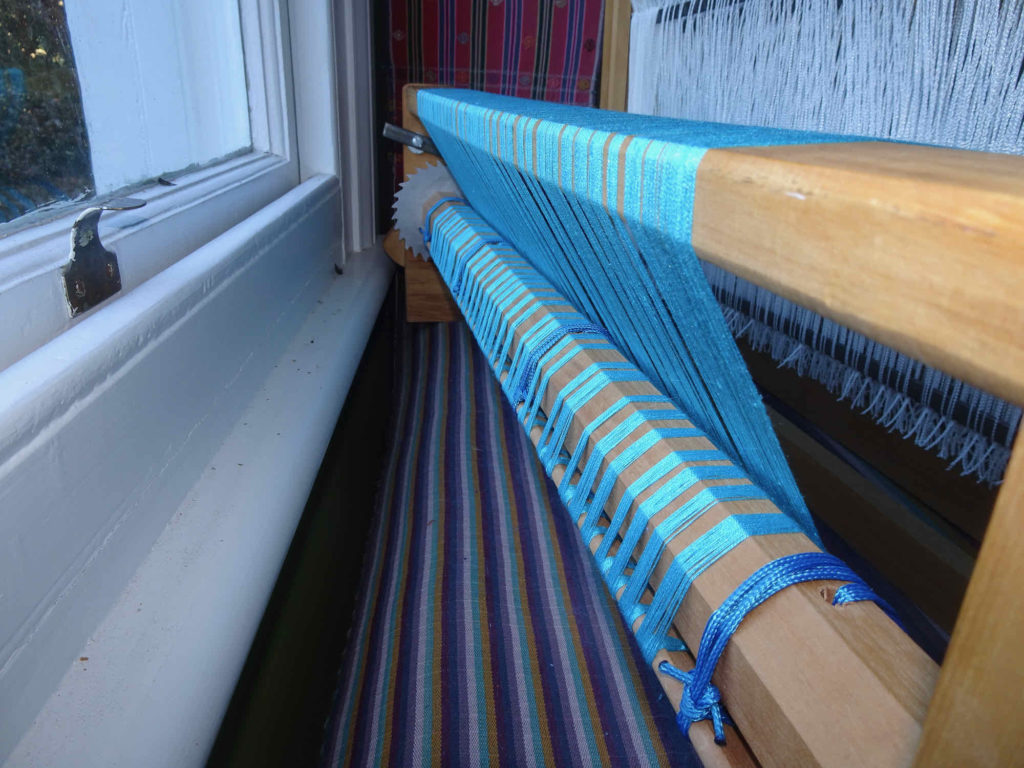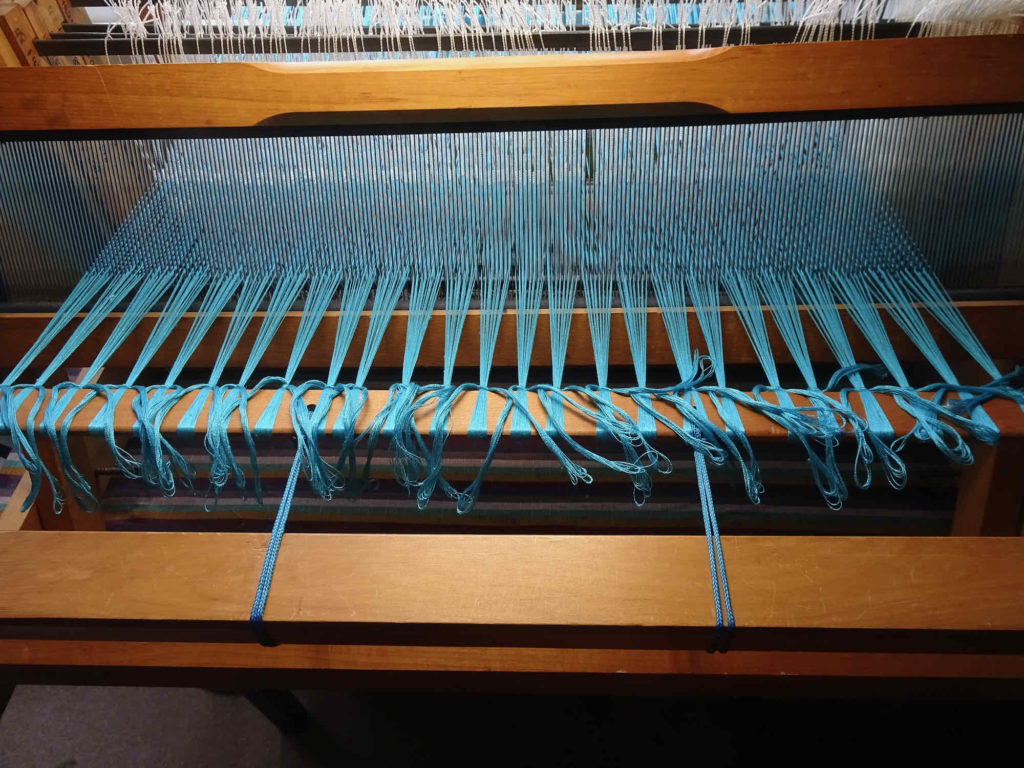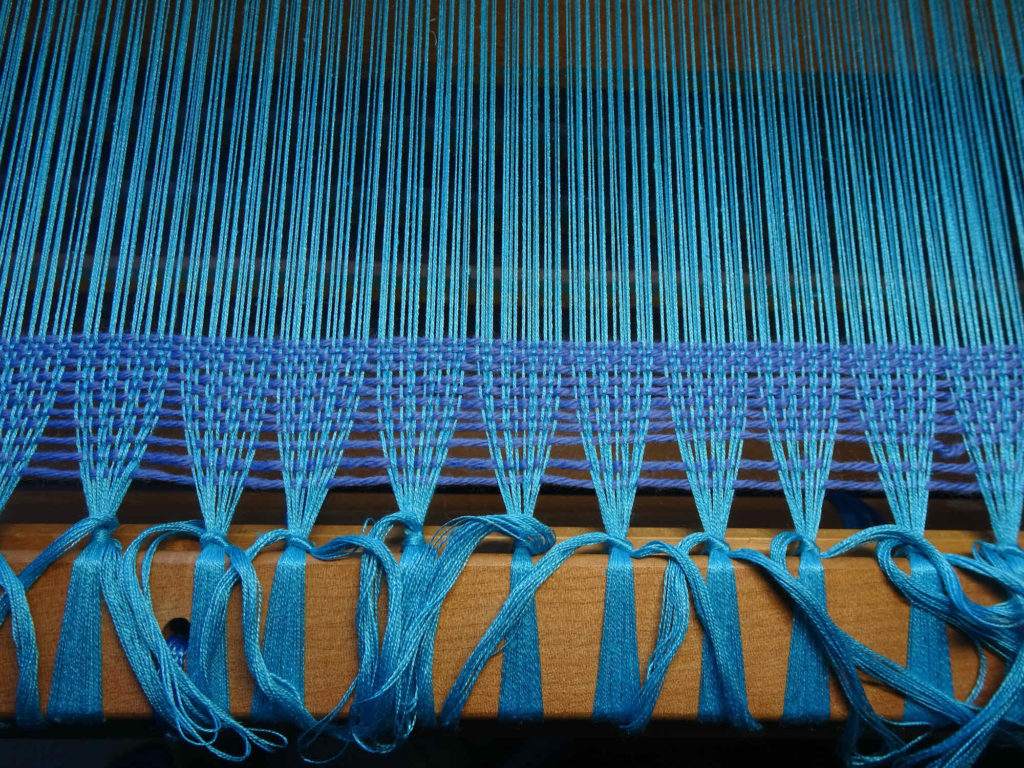Over the last few days, I’ve finished preparing the warp for weaving. This involved several steps:
1) Winding the warp onto the back roller
2) Tying the warp onto the front apron rod
3) Checking that the heddles were correctly threaded
4) Weaving header rows to spread the warp evenly across the fabric
I followed the method described by Deborah Chandler in her excellent book “Learning to weave”; pp46-53 for steps 1 and 2; pp79-80 for step 4.
Step 1 – Winding the warp – I removed all remaining choke ties from the warp chain and leaned the beater against the front beam. As I turned the back roller, the tension on the threads eventually moves the beater back against the castle. Because the warp threads for this sampler are quite short, I didn’t need to place separator sticks on the warp roller.

Warp wound onto the back roller
Step 2 – Tying onto the front apron rod – I separated the threads from 2 x 4 dents at the far right of the reed into a bundle and tied these onto the front apron rod using a surgeon’s knot (similar to half of a square knot, but with a third wrap – it is possible to tighten this like half a square knot, but the second half of the square knot is not required to maintain tightness). I repeated this at the far left of the apron rod. I then alternated from right to left until all threads were tied to the rod.

Beginning to tie the warp threads to the front apron rod 
All threads tied onto the front apron rod
Step 3 – Checking heddle threading – I lifted each shaft in turn to check that 4 threads were lifted in each of the tied bundles. I inserted a strip of cardboard through the warp threads to improve visibility. I also looked through the side of the castle to ensure that none of the warp threads were crossed. I found a threading error in a single bundle of threads when looking from the side – I had mixed up a threading sequence of 1-4 so I unthreaded shafts 1 & 2 for that individual bundle and corrected the error.

Checking the heddle threading
Step 4 – Weaving header rows – I wove 3 rows of plain weave (lifting sequence of 1,3 & then 2,4) using a thick wool yarn and beat these against the front beam. I repeated this 4 times before the warp threads were evenly spread across the fabric.

Header rows completed